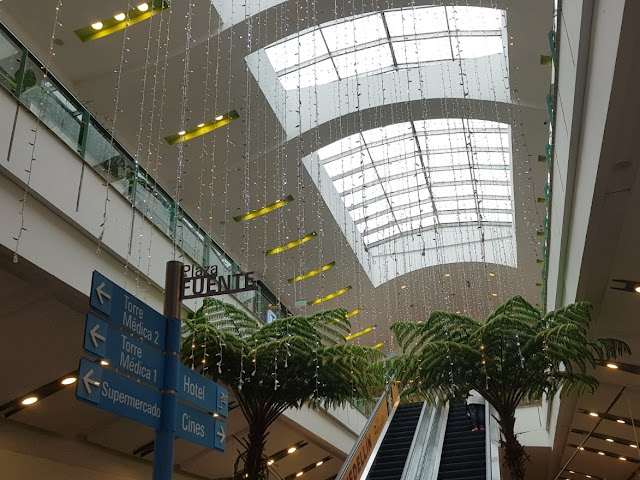Isla Fuerte Colombia - Strong Island Colombia
Strong Island (Isla Fuerte) is a small coral island in the Caribbean Sea off the northern coast of Colombia, in the Córdoba department, which is located south of the Gulf of Morrosquillo (Golfo de Morrosquillo). It is located 11 km from the mainland of Colombia. It is part of the chain of islands formed called the Rosario Islands, the Archipelago of San Bernardo and Tortuguilla.
Fuerte Island is approximately 1 mile in diameter and 1.5 miles from north to south. The island has an area of 3.25 km2 and an elevation of 12m. The island is encircled by reefs and some scattered rocks. Some of the rocks are visible above the water line.
The island is in danger due to potential sea rise due to climate change caused by global warming.
The nice thing about this island is that it has not been commercialized and therefore retains a great deal of it's native species. It can be difficult to walk in some parts due to the mangrove trees, and areas that are covered by stagnant water.
The first night on the island we witnessed a 'tropical storm'. It was so strong, that many buildings lost their roof (See the photo below), and one was struck by lightening and caught fire. I was quite scary for several hours.
Isla Fuerte (Strong Island) es una pequeña isla de coral en el Mar Caribe frente a la costa norte de Colombia, en el departamento de Córdoba, que se encuentra al sur del Golfo de Morisquillo. Se encuentra a 11 km del territorio continental de Colombia. Forma parte de la cadena de islas formadas llamadas Islas del Rosario, Archipiélago de San Bernardo y Tortuguilla.
Fuerte Island tiene aproximadamente 1 milla de diámetro y 1,5 millas de norte a sur. La isla tiene una superficie de 3,25 km2 y una elevación de 12 m. La isla está rodeada de arrecifes y algunas rocas dispersas. Algunas de las rocas son visibles por encima de la línea de flotación.
La isla está en peligro debido al posible aumento del nivel del mar debido al cambio climático causado por el calentamiento global.
Lo bueno de esta isla es que no se ha comercializado y por lo tanto conserva gran parte de sus especies autóctonas. Puede ser difícil caminar en algunas partes debido a los árboles de mangle y las áreas que están cubiertas por agua estancada.
La primera noche en la isla fuimos testigos de una "tormenta tropical". Era tan fuerte que muchos edificios perdieron su techo (vea la foto a continuación), y uno fue alcanzado por un rayo y se incendió. Estuve bastante asustado durante varias horas.





Comida - Food
 |
| Pargo Rojo - Red Snapper |
 |
| Pargo Rojo - Red Snapper |
 |
| Ensalada - Salad |
 |
| Arroz de Coco - Coconut Rice |
 |
| Patacón - Fried Plantain |
Naturaleza - Nature
 |
| Butorides virescens (Green Heron) |
 |
| Egretta caerulea (Little Blue Heron) |
 |
| Egretta tricolor (Tricolored Heron) |
 |
| Charadrius semipalmatus (Semipalmated Plover) |
 |
| Numenius phaeopus (Whimbrel) |
 |
| Brachyplatys subaeneus |
 |
| Augocoris illustris (Jewel Bug) |
 |
| Bradypus variegatus (Brown-throated Three-toed Sloth) |
 |
| Bradypus variegatus (Brown-throated Three-toed Sloth) |
El Árbol que Camina (Tree tree that walks), is a specimen of the Moraceae family, genus Ficus; This species is commonly known as matapalo. With its aerial roots it has managed to create a multitude of new trunks, giving the feeling of being the fusion of many trees in one, so it is a tree that has made it's own forest; something very special and rare, that makes it one of the greatest attractions of the Island.
El Árbol que Camina, es un ejemplar de la familia Moraceae, género Ficus; Esta especie se conoce comúnmente como matapalo. Con sus raíces aéreas ha logrado crear multitud de nuevos troncos, dando la sensación de ser la fusión de muchos árboles en uno, por lo que es un árbol que ha hecho su propio bosque; algo muy especial y raro, que lo convierte en uno de los mayores atractivos de la Isla.
The entire picture below is the same tree. It is the biggest that I have seen in my life.
La imagen completa a continuación es el mismo árbol. Es el más grande que he visto en mi vida.
 |
| Fig Tree |
In the image below, the large tree in the centre is El Árbol que Camina.
En la imagen de abajo, el árbol grande en el centro es El Árbol que Camina.











